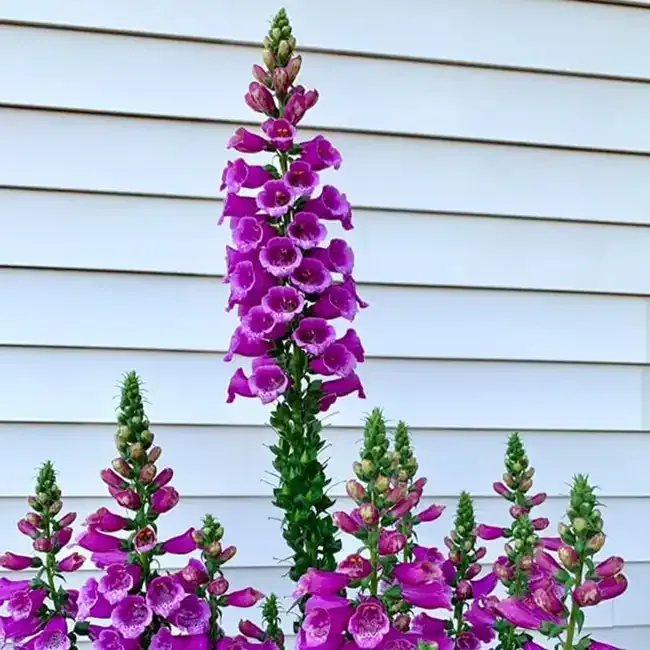
Foxglove (Digitalis purpurea) is a striking and elegant plant that adds vertical interest and vibrant color to any garden. Known for its tall spikes of tubular flowers, foxglove is beloved by gardeners and pollinators alike. This article will explore its native region, its role as a pollinator attractor, the significance of its biennial nature, and essential tips for growing and caring for foxglove in your garden.
Native Region
Foxglove is native to Europe, particularly the western and southwestern regions, including the British Isles, Portugal, Spain, and parts of France. It has since been naturalized in many other regions, including North America, where it thrives in temperate climates.
Foxglove is a magnet for pollinators, especially bees and hummingbirds. The tubular shape of its flowers is perfectly suited for long-tongued bees, which are some of the plant's primary pollinators. The flowers come in shades of pink, purple, white, and yellow, often with speckled throats, making them highly attractive to these essential garden visitors. By planting foxglove, you can help support pollinator populations in your garden.
Biennial Nature
Foxglove is a biennial plant, which means it has a two-year life cycle. In its first year, foxglove focuses on growing a rosette of leaves at the base of the plant. During this time, it gathers strength and stores energy for its second year. In its second year, the plant produces a tall flower spike, blooms, sets seed, and then typically dies after this reproductive cycle is complete. This biennial nature requires some planning in the garden, as the plant won't flower until its second year. However, foxglove readily self-seeds, so with proper care, you can enjoy a continuous display year after year.
Soil and Moisture Requirements
Foxglove prefers well-drained, slightly acidic to neutral soil, with a pH range of 5.5 to 7.0. It thrives in soil rich in organic matter, so incorporating compost or well-rotted manure into the planting area is beneficial. While foxglove can tolerate a range of light conditions, it does best in partial shade, where it receives filtered sunlight for part of the day.
Moisture is crucial for foxglove, particularly in its first year of growth. The soil should be kept consistently moist but not waterlogged. Mulching around the base of the plant can help retain moisture and keep the roots cool.
Tips for Caring for Foxglove
- Planting: Sow foxglove seeds in late summer or early fall for blooms the following year. You can also start seeds indoors in late winter and transplant seedlings to the garden in spring.
- Spacing: Space plants about 12 to 18 inches apart to allow for proper air circulation and to reduce the risk of disease.
- Watering: Water regularly, especially during dry spells, but avoid overwatering, as this can lead to root rot.
- Fertilizing: Foxglove does not require heavy feeding. A light application of balanced fertilizer in spring can promote healthy growth.
- Deadheading: After the first flush of blooms, cut back the flower spikes to encourage a second bloom and to prevent the plant from putting energy into seed production. However, if you want the plant to self-seed, allow some flowers to go to seed.
- Winter Care: In colder climates, provide a layer of mulch in late fall to protect the plant’s roots during winter. In milder climates, foxglove is more winter-hardy but still benefits from some protection.
Foxglove is a beautiful and versatile plant that, with the right care, can add drama and color to your garden. Its ability to attract pollinators, combined with its striking appearance, makes it a valuable addition to any garden. By understanding its biennial nature and meeting its soil and moisture requirements, you can enjoy the graceful blooms of foxglove for many seasons.
